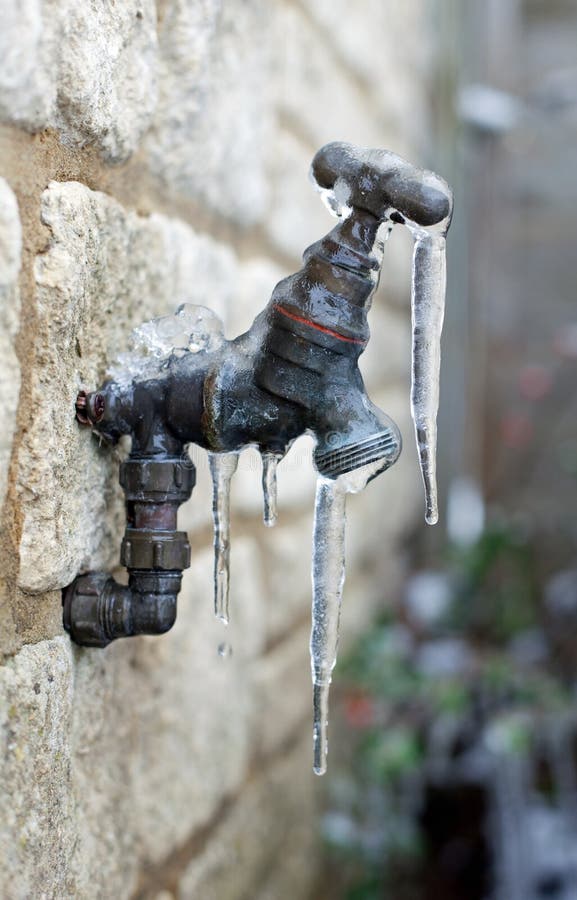Protecting Against Frozen Pipes: Effective Tips for Cold Weather
Protecting Against Frozen Pipes: Effective Tips for Cold Weather
Blog Article
How do you actually feel in regards to How To Avoid Freezing Pipes?

Winter can damage your plumbing, particularly by freezing pipelines. Below's exactly how to prevent it from happening and what to do if it does.
Introduction
As temperature levels decrease, the risk of icy pipes rises, possibly causing costly fixings and water damage. Recognizing how to avoid icy pipelines is crucial for house owners in cold climates.
Avoidance Tips
Shielding vulnerable pipelines
Cover pipes in insulation sleeves or use heat tape to safeguard them from freezing temperature levels. Focus on pipelines in unheated or exterior locations of the home.
Heating methods
Maintain interior areas effectively heated, particularly locations with pipes. Open up cabinet doors to allow warm air to distribute around pipelines under sinks.
Exactly how to recognize frozen pipes
Try to find reduced water circulation from taps, uncommon smells or sounds from pipelines, and noticeable frost on subjected pipelines.
Long-Term Solutions
Architectural changes
Consider rerouting pipelines far from outside walls or unheated areas. Add added insulation to attics, cellars, and crawl spaces.
Updating insulation
Purchase top notch insulation for pipes, attics, and wall surfaces. Appropriate insulation helps keep consistent temperature levels and lowers the danger of icy pipes.
Shielding Outside Pipes
Garden pipes and outdoor taps
Separate and drain yard tubes before wintertime. Set up frost-proof spigots or cover outdoor faucets with insulated caps.
Comprehending Icy Pipes
What triggers pipes to ice up?
Pipes freeze when subjected to temperature levels listed below 32 ° F (0 ° C) for extended periods. As water inside the pipelines ices up, it increases, putting pressure on the pipe walls and possibly causing them to rupture.
Dangers and problems
Icy pipelines can bring about water disturbances, residential property damages, and pricey fixings. Burst pipes can flooding homes and create considerable architectural damage.
Indicators of Frozen Water Lines
Determining frozen pipelines early can stop them from breaking.
What to Do If Your Pipelines Freeze
Immediate actions to take
If you suspect icy pipes, keep taps open to alleviate stress as the ice thaws. Use a hairdryer or towels soaked in warm water to thaw pipes gradually.
Verdict
Avoiding frozen pipes calls for positive procedures and quick feedbacks. By comprehending the causes, indicators, and preventive measures, house owners can shield their pipes throughout winter.
5 Ways to Prevent Frozen Pipes
Drain Outdoor Faucets and Disconnect Hoses
First, close the shut-off valve that controls the flow of water in the pipe to your outdoor faucet. Then, head outside to disconnect and drain your hose and open the outdoor faucet to allow the water to completely drain out of the line. Turn off the faucet when done. Finally, head back to the shut-off valve and drain the remaining water inside the pipe into a bucket or container. Additionally, if you have a home irrigation system, you should consider hiring an expert to clear the system of water each year.
Insulate Pipes
One of the best and most cost-effective methods for preventing frozen water pipes is to wrap your pipes with insulation. This is especially important for areas in your home that aren’t exposed to heat, such as an attic. We suggest using foam sleeves, which can typically be found at your local hardware store.
Keep Heat Running at 65
Your pipes are located inside your walls, and the temperature there is much colder than the rest of the house. To prevent your pipes from freezing, The Insurance Information Institute suggests that you keep your home heated to at least 65 degrees, even when traveling. You may want to invest in smart devices that can keep an eye on the temperature in your home while you’re away.
Leave Water Dripping
Moving water — even a small trickle — can prevent ice from forming inside your pipes. When freezing temps are imminent, start a drip of water from all faucets that serve exposed pipes. Leaving a few faucets running will also help relieve pressure inside the pipes and help prevent a rupture if the water inside freezes.
Open Cupboard Doors
Warm your kitchen and bathroom pipes by opening cupboards and vanities. You should also leave your interior doors ajar to help warm air circulate evenly throughout your home.

As an enthusiastic person who reads on Helpful Tips to Prevent Frozen Pipes this Winter, I was thinking sharing that chunk was worthwhile. Sharing is good. Helping others is fun. Bless you for your time. Return soon.
Schedule Now! Report this page